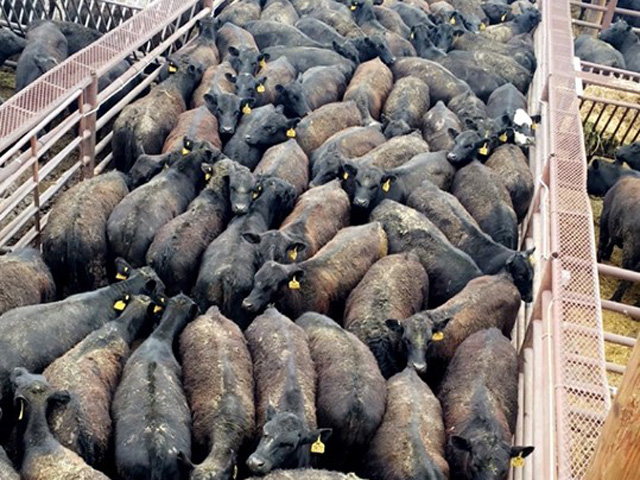Call the Market
Dreaming of Aces While Holding Two and Seven in the Game Called Cattle
With the market's recent drunken binge of events -- COVID-19, slaughterhouses shutting down, cattle backing up and slim feedlot placements -- I'd like to think that we could rely on history to help us see clearly into the current market. History is a beautiful, faithful tool when studying psychological patterns and human behavior. Unfortunately (or fortunately?) the market hasn't danced with the mistress named coronavirus before.
While reading through John Harrington's book, "Oprah, Have a Hamburger" I relished his observations about being a "designated bear." He poetically wrote, "A designated bear is an individual who fearlessly promotes the market's dark side in the middle of wall-to-wall bullishness ... he stands prepared to suffer the scorn, ridicule and shunning of his ever-bullish peers, all because of a determined faith that his small candle of pessimism can somehow safeguard the seed of the next cycle and/or price recovery."
On a daily basis, I personally go to war as both a designated bear and as a determined bull. My instinct is to rant and rave, outwork and never quit like a proud bull ought to. But when looking at the market through an analytical eye, I understand just how important it is to highlight the things that a determined bull usually overlooks or discounts.
Today's market may not be standing in "wall-to-wall bullishness," but it's important to understand what may be coming down the pike.
P[L1] D[0x0] M[300x250] OOP[F] ADUNIT[] T[]
Thankfully ... hopefully (and pray until your knees can hold you no more), we may have COVID-19 behind us. But the detriments it left on the cattle industry are still looming among us and are building rapidly in the third quarter.
Last year saw a rough third quarter because of the Holcomb, Kansas, packing plant fire. Cash cattle prices plummeted and everyone was skeptical of the market for quite some time. But this year, the third quarter is bothersome for a whole new set of reasons.
The diligent, designated bear has plenty to wrestle with -- concerns about increased cattle weights, lower beef demand and the unknown of when the backlog of cattle will be worked through. Amid this chaos, cow slaughter has spiked, and with more cattle lining the feed bunks of the countryside -- and with most of the country needing a good drink of rain -- looming concerns of feed costs are at the back of everyone's mind.
There are two USDA reports that are especially useful when monitoring cattle weights and slaughter. First, the Estimated Weekly Meat Production Under Federal Inspection, printed every Friday, estimating the week's production. Second, the Actual Slaughter Under Federal Inspection, printed every Thursday, debuting the actual numbers of two weeks ago. The 712 report gives you a quick idea of what the week accomplished, but the 711 is the Holy Grail.
| USDA 711 Acutal Slaughter Under Federal Inspection | ||||
| Actual | Actual | |||
| Total | Percent | Live | Dressed | |
| Week Ended | Slaughter | Change | Weight | Weight |
| 5/9/2020 | 475,683 | 8.51 | 1,369 | 896 |
| 5/16/2020 | 519,123 | 9.13 | 1379 | 901 |
| 5/23/2020 | 571,506 | 10.09 | 1370 | 894 |
| 5/29/2020 | Not yet available | |||
| 6/5/2020 | Not yet available | |||
| USDA 712 Estimated Weekly Meat Production Under Federal Inspection | ||||
| Estimated | Estimated | |||
| Total | Percent | Live | Dressed | |
| Week Ended | Slaughter | Change | Weight | Weight |
| 5/8/2020 | 452,000 | 6.35 | 1,357 | 816 |
| 5/15/2020 | 499,000 | 10.40 | 1,359 | 814 |
| 5/22/2020 | 555,000 | 11.22 | 1,363 | 816 |
| 5/29/2020 | 524,000 | -5.59 | 1,370 | 820 |
| 6/5/2020 | 636,000 | 21.37 | 1372 | 824 |
As you can see from the charts above, carcass weights are far heavier than we initially assumed, and as cattle continue to sit in feedlots across the U.S., waiting to be harvested, this is a trend that will unfortunately continue. The additional weight creates a plethora of problems for cattlemen and the industry alike.
Each day fat cattle sit in feedlots for longer than they were projected to, they are continuing to rack up feed costs -- all while the feedlot manager watches live cattle prices erode. Heading into the third quarter with an oversupply of beef pressures the market because it's hard to move meat in the third quarter. The prime of grilling season is over, kids go back to school and the hype of summer is gone.
Although the worst of COVID-19 may be behind us, there are plenty of other things to be concerned about now. It can sometimes feel like we are caught at the poker table holding nothing more than a two and seven while the cards we long for are stacked at the bottom of the deck. Just like you don't feed your cattle half-heartedly or tend to a new-born calf half-heartedly -- don't plan half-heartedly either.
A big part of keeping up with the market is simply being aware of what's going on and not getting caught in the whirlwind of surprise. As the days pass by and inch closer to July and the third quarter, be savvy -- don't allow yourself to become complacent -- and be ready to make a move with the next hand of cards you are dealt.
ShayLe Stewart can be reached at shayle.stewart@dtn.com
(c) Copyright 2020 DTN, LLC. All rights reserved.




